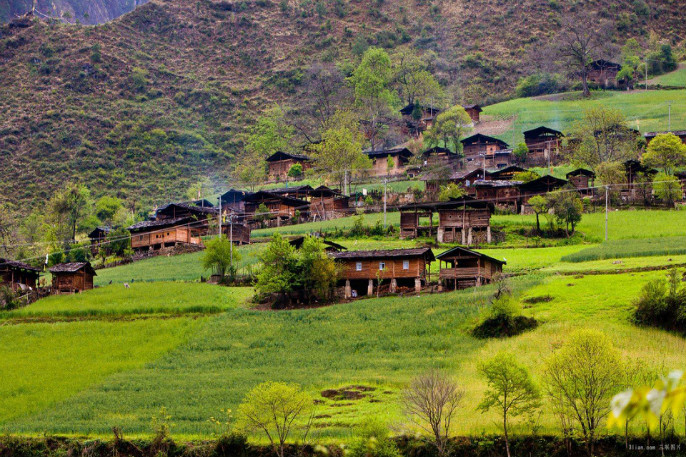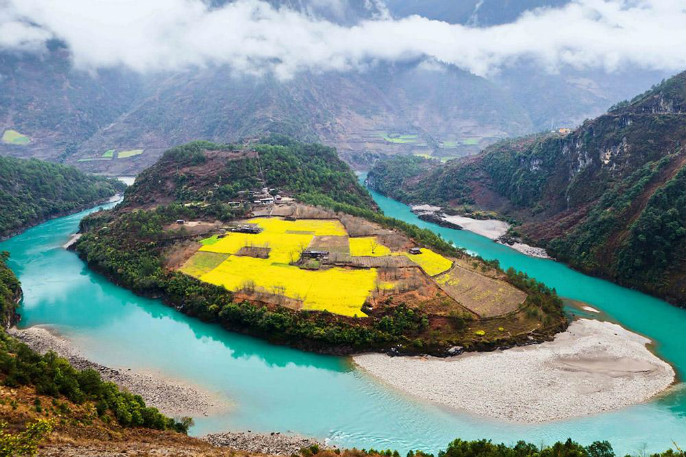
Bingzhongluo: If beauty has a color
“Nujiang River flows southwards and forms the first U-shaped bay when it reaches Gongshan Dulong and Nu Autonomous Country in Yunnan. That is where Bingzhongluo Village lies.
Starting from the mid-October, the paddy and corn fields are turning golden in earnest with white morning fog hovering above the Nujiang River. Autumn is the season of rice ripening in Bingzhongluo which is wakened in the fragrance of rice moistened by thick fog that lingers around amid mountains. The remote 5,128-meter high Gawagapu Snow Mountain with year-round white peaks marks an isolated holy and pure glacier world. Watch a bit closer is the Tibetan Buddhism Puhua Temple with waving prayer flags, built in the Qing Dynasty (1644-1912), co-existing in peace with Chongding Church; closer again are the well-arranged flagstone-roofed wooden houses anchored on slopes and surrounded by golden crops of the fall and distinct green grass and pink peach blossoms. Walk straight up to meet the dozing dogs and pacing chickens and ducks in leisure.
To epitomize the autumn of Bingzhongluo in one color is far from easy, for Bingzhuoluo in autumn occupies the spectrum of colors. Forests, lakes, snow mountains and grasslands are all breathtakingly contrasted in colors and the green-to-yellow and yellow-to-red color changing of species of trees rightly entitle Bingzhuoluo the description of ‘palette' literally.
Walking farther beyond Bingzhungluo Village are two pristine villages on the Tea Horse Road: Wulicun, which is perfect for sunset photographing and Qiu’natong, the corn of Yunnan’s protected area of Three Parallel Rivers.

Bingzhongluo is on the border with Tibet, and whose inhabitants include Tibetan, Nu, Dulong, and Li’su ethnic minorities.
Homesick for the tranquil and leisure life of his home, A’bei, an ethnic Tibetan, returned to Bingzhongluo and is running his guesthouse after working for sometime elsewhere. When asked by his guests, A’bai will organize a horse caravan to escort them along The Tea Horse Road to Cawarong of Tibet. A’bai has a gift of singing, “My ladies, don’t leave our hometown. Listen to me, stay in Gongshan...”. A’bai told us that he would never leave Bingzhongluo because of its simple and honest folk customs and original look.“Hens are raised on the loose running everywhere on the slope and spend the night on trees. After a four-hour walking through villages and pristine forests, you will reach a highland pasture...”

As night falls with starry sky, villagers lit up campfires in the yard, and drank over smoked wine chicken served on tables, and started dancing and singing. Locals said that adult villagers, be it men or women, all like to drink liquor around the bonfire to repel the dampness of Bingzhongluo which is at a high elevation with humidity. “Bonfire is where hot air flows”, said a local.
There is a tablet outside village that reads, “if beauty has a color, you have seen it.”
You can check more information from our website , for itinerary and travel guide in Bingzhongluo. And contact us for Nujiang Private tour.